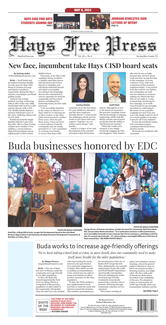By Moses Leos III
Adhering to player pitch counts could be a reality for Texas high school baseball coaches next season as the UIL could implement a new policy requiring them.
According to a report from the Houston Chronicle, the UIL released a statement earlier this month stating it is working with stakeholders on a pitch counts proposal that would go before its legislative council in October, with possible implementation planned for the 2016-2017 season.
The UIL’s statement came after the National Federation of High School Associations (NFHS), ofwhich the UIL is a member, mandated all state associations develop their own pitch count policy, according to the Chronicle. That policy is based on pitches thrown during a game to allow pitchers to rest between outings.
The proposal calls for a pitch count based on a player’s age; the number of days’ rest is determined by how many pitches the athlete threw.
For Lehman High head baseball coach Toby Robinson, keeping a tight pitch count on players is already in practice with his staff.
Robinson said the prospect of adhering to a mandated pitch count rule is not a bad idea.
Lehman pitchers stay within the 80 to 90 pitch range per outing, Robinson said.
He said the team goes in with a game plan for every contest, but he also doesn’t want players to “stay in there and overdo it.”
“Every game, we have two or three pitchers planned,” Robinson said. “We let them know what their roles are.”
The possibility of new pitch count rules could lead to more planning for teams in districts such as the new 25-6A, which the Lobos and Hays Rebels are a part of, Robinson said. The district is slated to play district games on Tuesday, Friday and Saturday.
“We do a good job of keeping pitch limits, but with strategy and how deep we are, that’s going to play a big factor,” Robinson said. “It might mean some players get to the (varisty level) quicker than normal.”
The new pitch limits could also prevent end of season burnout for some athletes, Robinson said.
He added the new rules would be uniform to pitch counts implemented in little league baseball.
“You don’t want inconsistency,” Robinson said. “If you’re going to have a (pitch count), have it. Make it from top to bottom.”
At Hays, head baseball coach James Howard said keeping player pitch counts is the norm for its coaching staff. Having a pitch count to abide by in the future is beneficial.
“I think anything you can do to protect the players is a good thing,” Howard said.
Howard said players seldomly go over the 100-pitch mark, due to the team’s overall pitching depth. He said the team is cautious whenever a player nears the 100-pitch mark, which he said is the team’s red flag.
“We do keep guys on pitch counts,” Howard said. “It’s something we watch, but it hasn’t been an issue.”
Howard said the majority of high school baseball coaches care for player safety and understand the dangers of overuse, or pitching too much.
Depth at the 6A level helps keep the issue of high pitch counts from happening, Howard said.
He added there are more cases at the little league level of coaches wanting to “win at all costs, even if it sacrifices a player’s health.”
“I’ve been coaching for 17 years and seldom do you see a coach that’s willing to put a player’s safety in jeopardy from leaving him out (on the mound) too long,” Howard said.
Keeping the idea of pitch counts uniform across the board, from little leaugue to high school, is also a benefit, Howard said.
“It’s a good idea to have a rule in place to keep (high pitch counts) from happening,” Howard said.
The UIL’s proposed pitch counts:










